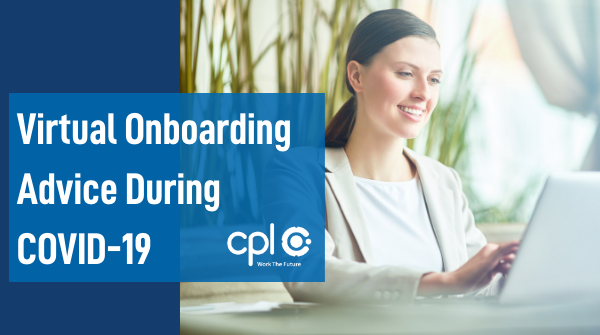Remote onboarding refers to virtually onboarding new hires. Before the COVID-19 pandemic virtual or remote onboarding was largely reserved for employees who live abroad or have remote contracts, however it is now essential across the board.
Primarily, virtual onboarding helps new hires acclimate to the social and professional expectations of their new work environment so they can proceed comfortably and effectively in their roles.
Onboarding is not a defined process, but a reaction to the needs of the individual.
Typically, onboarding is done in person. On someone's first day at the office, you can greet them in the morning with a welcome package in hand. You'll show them to their desk, introduce them to everyone, set up a meeting, and explain the training process.
At noon you'll swing by their desk, tell them to stop working and come grab lunch with the team. This constant and intentional contact over the upcoming weeks will help them get familiarised with the company culture, the work they'll be doing, and who they'll be doing it with.
Do remote employees need onboarding too?
Of course, in the current climate, this isn't possible but employees should still have structured onboarding. Virtual onboarding is different, but overall the same ideas apply.
An introductory handshake becomes an introductory message and a welcome lunch becomes a virtual coffee break. Mastering remote onboarding is crucial and will ensure new team members are comfortable and can thrive in their role.
Research indicates that organisations who fail to implement correct onboarding practices are likely to experience lower levels of job satisfaction and motivation, and higher levels of turnover.
Given the current COVID-19 pandemic, both international and domestic companies have been forced to quickly adapt and increase remote onboarding practices.
The below will outline some of the practices that companies have been implementing to ensure successful remote onboarding and will hopefully help you improve your own.
Virtual Onboarding Best Practices
Before a New Employee's Start Date
Digitalise Documents
There are a lot of processes that can be initiated digitally before onboarding. The simplest one is putting all the new-hire paperwork together and collecting electronic signatures for all required documentation.
The best place to start is digitising the company handbook (if you don't already have online versions) and creating a portal that new employees can use for onboarding.
Not only should the handbook be turned into a PDF, but it should be available online and searchable so employees can come back to it whenever they need clarification.
If you have an intranet creating an onboarding hub within this can be useful.
On-Boarding Portal
An accessible internal training/learning and development portal will control:
How new staff move through the new-hire process
Verify they've seen the right information and agreed to it
Give employees a breakdown of the company at large as well as their roles
This will become a 'one-stop-shop' for all onboarding administration, communication and induction materials. This can include the basics like an employee handbook or training materials and will make your remote workers' early days in the business much easier.
Necessary Hardware in Place
Above all else, it's vital your employee has all necessary hardware they need to do their job. For most this will include a laptop, monitor, mouse, keyboard, etc.
Determining their Wi-Fi capacities and whether they need a VPN is also important.
Other forgettable necessities include ensuring they have access to licenced company software, any log-in details they need, computer security guidelines, as well as additional instructions for setting up their workstation.
Employee On-boarding Kit
A well-crafted employee onboarding kit can help spark employee pride, engagement, and advocacy. It is also an excellent way to show your new hire what your company is all about.
Studies show that during their first couple of months, new employees are still feeling out whether they fit in with the company/team :- an experience called belonging uncertainty.
An onboarding kit can be a great way to combat any uneasiness your new hires may be feeling.
Once your Virtual Employee Begins Work
Constant, Concise Communication
Communication is key, assigning the new hire to a job coach and an orientation leader can be a good way to maintain contact.
During their first few weeks, employees should have daily meetings with their orientation leader and regular check-ins with their job coach to make sure they have the resources they need to learn.
Virtual Introduction
Make your new remote employee feel like part of the team by setting up video calls with 'organisational insiders' (team members and other key employees).
These meetings could be one-on-one and/or group calls with co-workers, direct report and employees from other departments they'll work closely with.
Emphasising on the importance of organisational insiders, their acceptance towards newcomers is a very important factor, as it is important for newcomers to feel socially comfortable and accepted by their peers and superiors.
For example, research shows that a newcomer integrating into a work-group is positively related to several socialisation outcomes, such as greater commitment and less turnover (KammeyerMueller & Wanber, 2003).
Training and Support
Scheduling role-specific group training sessions via the onboarding portal and using interactive training courses that are user-friendly, including pre-recorded demonstrations will assist in engagement and basic information retention for new hires.
In conclusion, take the time to integrate any new employees during this time and ensure that expectations, corporate structure and communication channels are clear from the outset. Give them the tools and trust their ability to perform their new tasks successfully.
